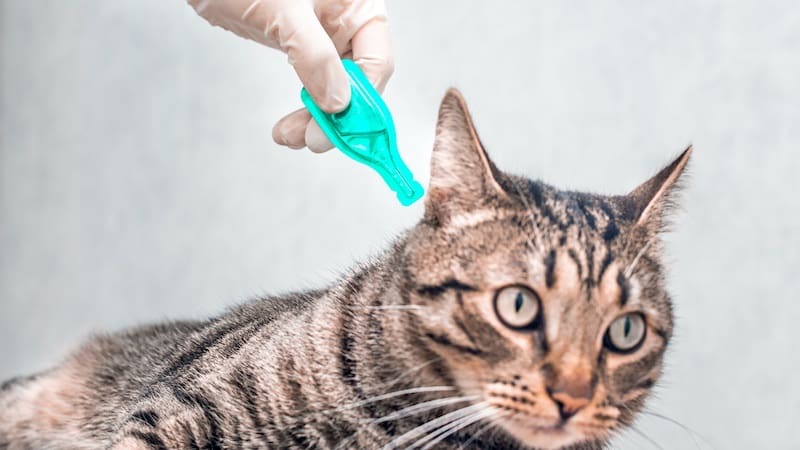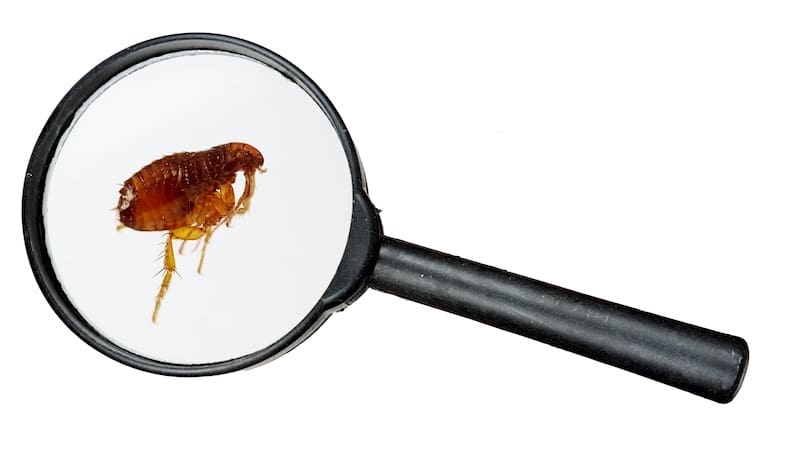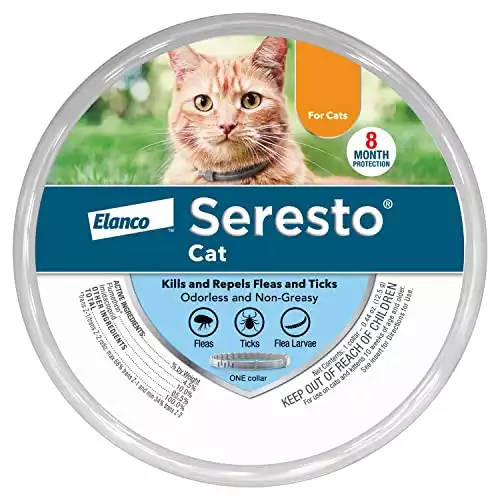Flea invasions may be a significant issue for cats and their people, yet it can be hard to assess the degree of the problem. Do you have just a few fleas or are they taking over your home?
Determining how to tell how bad a flea infestation is will be key to successfully eliminating them, and here we provide insight into how bad it can be as well as treatments, indicators that all fleas have been removed from your home, and advice for caring for your pet during treatment. Read on as we tell how bad a flea infestation really is.
Identifying a Severe Flea Infestation

Fleas are a common problem for dog or cat owners, and it is important to identify an infestation before it gets out of hand. Signs of an infestation include excessive scratching or biting by your pet, flea dirt (dark specks that look like pepper) in their fur, or seeing actual fleas or flea bites on them.
If you see any of these signs, then there is likely a severe flea infestation present.
How many fleas is considered an infestation? Generally speaking, if you can visibly see more than 10-15 adult fleas on your pet at one time then this could be considered an infestation. Nevertheless, bear in mind that the amount of flea eggs and larvae present could be much greater than what is visible to the unaided eye.
Lastly, don’t forget to check yourself for flea bites and other signs after spending time with animals as some species are capable of jumping onto humans too.
Identifying a serious flea problem in its early stages is critical, as delaying can make eradication more costly and challenging.
Treating a Severe Flea Infestation
Treating a severe flea infestation is essential for the health and wellbeing of your pet. Fleas can pass on tapeworms and other intestinal parasites so you need to act quickly.
Different treatment options to address varying levels of severity exist, allowing pet owners to provide the best care possible. Additionally, there are some tips and tricks that can help keep fleas away from your home in the future.
For mild infestations, over-the-counter products such as topical medications, sprays, shampoos and powders may be effective. However more severe cases may require professional intervention. Prescription medication from a vet or pest control professional should be considered. In severe cases, it might be essential to fumigate in order to totally eliminate all evidence of fleas from a home.
What To Expect During Treatment:

Treating a flea breakout requires patience and dedication since it often takes multiple attempts before all traces of fleas have been eliminated from an area or off a pet’s body. During treatment it’s important to thoroughly vacuum carpets daily while also washing your pet’s bedding and cushions frequently with hot water (at least 130°F). It’s also wise to keep your pet off your bed until treatment is successful.
Even with hardwood floors you aren’t in the clear. Fleas lay eggs in the cracks between floorboards. Use a magnifying glass and inspect for eggs and vacuum as required.
If using topical medication or other over-the-counter products make sure they are applied according to instructions given by the manufacturer as incorrect use could cause harm or even death if ingested by pets or humans living in the house.
Maintaining tidiness and taking precautionary steps to forestall further infestations are both necessary following treatment.
Additionally, keeping pets groomed will help reduce their chances of becoming hosts for fleas again – this includes brushing fur regularly and trimming nails when needed.
Once the treatment has been successful you should seriously consider a cat flea collar to help prevent a further infestation.
Finally, installing screens around windows/doors can further discourage any potential intruders from entering into homes where people live with animals who could bring them inside unknowingly.
Treating a severe flea infestation requires diligence and patience, but it can be done. Now let’s look at determining if all the fleas are gone.
Recap: It is essential to take the necessary measures for both treating and avoiding fleas in the house. This includes using topical medications or other over-the-counter products as well as regular vacuuming and washing bedding with hot water (130°F).
Determining if the Infestation is Gone

The objective of flea control is to eliminate the issue promptly and completely. But how do you know when you are successful? This section will cover the duration of flea eradication, testing for lingering parasites after treatment, and approaches to avert future occurrences.
How Long Does It Take To Get Rid Of A Bad Flea Infestation?
The timeframe for eliminating a significant flea infestation can differ depending on the magnitude and intensity of the issue. It could take a few weeks to several months for complete elimination, but consistent vacuuming and treatments can expedite the process.
Once treatment has been applied, try to detect fleas by inspecting carpets and upholstered furniture for any adult fleas, larvae-stage insects or flea pupae left behind is essential to ensure that the problem has been eliminated.
Vacuuming these areas thoroughly every few days during this period can also help reduce any potential re-infestations from occurring due to missed flea eggs or larvae hatching out into adulthood again later on down the line.
Additionally, keeping pet bedding clean and free from debris such as fur clumps which provide ideal breeding grounds for these pests is also important in avoiding another outbreak altogether over time if possible.
Finally, ensure your garden fencing is cat proof so that stray cats don’t enter into your garden area where they may bring along unwanted guests like ticks or other parasites to further complicate matters even more.
Fortunately, there are some simple steps you can take such as installing a cat proof fence or motion activated sprinklers which deter cats away without harming them at all while still protecting your precious flower beds too.
Once the remedy has been administered, it is vital to check both your pet and residence for any residual parasites.
Recap: Tackling flea infestations may take anyplace from two weeks to a few months, so it is critical to stick with consistent treatments and check for residual fleas post-treatment. To prevent future outbreaks, pet bedding should be kept clean and outdoor areas around the property must remain well maintained in order to “keep cats out”.
Caring for Your Pet During and After Treatment
It’s important to monitor your pet’s health following the completion of a flea infestation treatment. Watching for signs of itching, scratching, or discomfort can alert you if there are still any remaining parasites on your pet’s skin or fur. To maximize the healing process, ensure your pet is consuming adequate food and fluids.
Recap: Offer your pet lots of love and attention during treatment for a flea infestation, monitor them afterwards to ensure the issue is resolved, groom frequently, watch out for any signs of distress, and make sure they are eating healthily to expedite their recovery.
FAQ
Can indoor cats get fleas?
Firstly, it’s important to understand that fleas can find their way into your home through various means such as on your clothes or shoes. They can also be carried in by guests, other pets like dogs or even rodents. Once inside your home, fleas can easily jump onto your unsuspecting feline friend.
Secondly, if you have a garden or balcony that your cat has access to, they may pick up flea eggs or flea larvae which can later hatch and infest their coat. This is especially common in warmer climates where flea populations thrive all year round.
How do you determine the severity of a flea infestation?
The severity of a flea infestation can be determined by assessing the number of live fleas present, as well as any other signs such as flea dirt (flea feces), eggs or larvae.
It is also important to consider how long the infestation has been present and whether it is confined to one area or widespread throughout the home. For further evaluation and to determine the best treatment options, seek advice from your veterinarian if you suspect a flea infestation.
What does a serious flea infestation look like?
Pets may experience intense itching as well as hair loss due to excessive scratching caused by an infestation. In extreme cases, it is possible for both dog or cat to develop secondary infections from all the biting and scratching associated with a severe flea problem.
Have I got all the fleas out of your house?
For a successful elimination, an all-encompassing approach is essential. Start by thoroughly vacuuming carpets and furniture, paying special attention to corners and crevices. Wash pet bedding on the highest heat setting possible and treat any pets with an appropriate medication prescribed by a veterinarian.
Do the white sock test by walking around your home for a few hours in knee high white socks. If your home is still infested chances are you will see at least a few fleas on the socks.
Do flea collars work?
These collars contain chemicals that are released over time and spread throughout your cat’s fur to kill fleas on contact. They work by either emitting a gas or coating your cat’s fur with insecticides that repel pests. While some pet owners swear by them, others are skeptical about their effectiveness.
The truth is that the effectiveness varies based on many factors such as the type of collar used and the severity of infestation.
We recommend the following flea collar.
Long-lasting flea collar kills & repels fleas for 8 continuous months. Seresto is the #1 selling non-prescription fleas, stocked by 8,000 vet clinics.
Starts working within 24 hours to kill & repel fleas by contact so fleas and ticks don’t have to bite your cat to die.
Conclusion
A flea infestation can be a difficult and time-consuming problem to tackle. Knowing how to tell how bad a flea infestation is, however, is the first step in getting rid of it for good. By quickly recognizing the signs of a serious flea infestation and treating it with appropriate products, you can protect your pet and home from these irritating parasites while eliminating them completely.
Take proactive steps to keep neighbourhood and feral cats out of your garden by installing a cat-proof fence or other cat deterrents.






